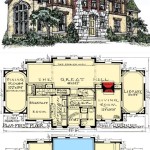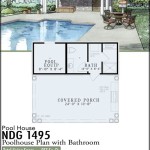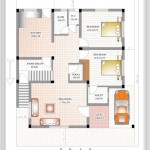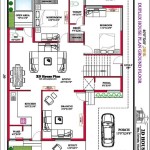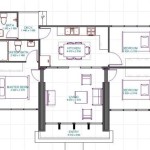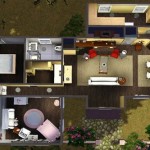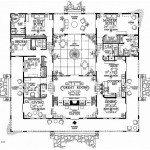Draw Your Own Room Addition Plans: A Comprehensive Guide
Planning a room addition is a significant undertaking. While hiring an architect is often recommended, especially for complex projects, drawing preliminary plans can provide a valuable starting point. This guide explores the process of creating initial room addition plans, offering insights into the key considerations and steps involved.
Understanding Your Needs and Goals
Before putting pen to paper, it's crucial to define the purpose and functionality of the new space. This clarity will guide the design process and ensure the final result meets specific needs. Consider the following:
- Purpose of the addition (e.g., bedroom, bathroom, home office)
- Required square footage
- Desired features (e.g., built-in storage, fireplace, large windows)
- Budgetary constraints
Assessing Existing Structure and Site Conditions
A thorough assessment of the existing house and property is essential. This information will inform the feasibility and design of the addition. Key elements to consider include:
- Foundation type and condition
- Available space on the property and setbacks
- Location of existing utilities (e.g., plumbing, electrical)
- Roofline and structural elements of the existing house
- Local building codes and zoning regulations
Choosing the Right Drawing Tools
Several tools can be used to create room addition plans, each with its own advantages and disadvantages. Options include:
- Graph paper and pencil: A simple and cost-effective option for initial sketches.
- Online room planning software: User-friendly tools that offer pre-designed templates and drag-and-drop functionality.
- Computer-aided design (CAD) software: Provides advanced design capabilities and precise measurements, but requires specialized skills.
Creating a Base Floor Plan
Start by drawing a scaled version of the existing house. This provides a framework for integrating the new addition seamlessly. Accuracy is crucial in this step:
- Measure the existing rooms carefully.
- Choose an appropriate scale (e.g., ¼ inch = 1 foot).
- Indicate the locations of doors, windows, and other fixed elements.
Designing the Room Addition
With the base floor plan complete, the next step is designing the addition itself. Consider the following design principles:
- Flow and Functionality: Ensure the addition flows logically with the existing house and meets the intended purpose.
- Natural Light: Maximize natural light with strategically placed windows and skylights.
- Ventilation: Adequate ventilation is essential for comfort and air quality.
- Accessibility: Consider accessibility requirements if needed.
Adding Details and Dimensions
Once the layout is finalized, add details and dimensions to the plan. This provides a clearer picture of the proposed addition:
- Label each room and space.
- Indicate the dimensions of walls, doors, and windows.
- Show the location of electrical outlets, plumbing fixtures, and HVAC systems.
Reviewing and Refining the Plans
The design process is iterative. Review the plans thoroughly and make adjustments as needed:
- Walk through the plan mentally, visualizing the space and its functionality.
- Consider different furniture arrangements and how the space will be used.
- Seek feedback from family members or friends.
Working with Professionals
While drawing your own plans is a valuable starting point, consulting with professionals is essential before proceeding with construction. These professionals can provide expert guidance and ensure compliance with building codes:
- Architect: Can refine the plans, address structural considerations, and prepare detailed construction drawings.
- Structural Engineer: Can assess the structural integrity of the existing house and the proposed addition.
- Contractor: Can provide cost estimates and manage the construction process.
Drawing your own room addition plans can be a rewarding experience. While software tools can be helpful, even basic sketches on graph paper offer a powerful means of visualizing and planning your dream space. This preliminary planning stage provides a crucial foundation for effective collaboration with architects, engineers, and contractors, ultimately contributing to a successful room addition project.

Second Story Additions Plans Found On Davisframe Com Home Addition Floor Ranch

Floor Plans Models For Panel Built Homes Tiny House Cottage Small

How To Create A Floor Plan And Furniture Layout

Additions Custom Home Design Designer Draftsman

Draw Floor Plans With The Roomsketcher App

Pin On Home

The Majestic Master Suite Ii Modular Home Pennflex Series Standard As Ranch Style Pennwest Homes Model Hr172 Az Custom Built By Patriot S

Draw Floor Plans With The Roomsketcher App

How To Design A Home 7 Steps Your Dream Foyr

Free 3d Home Design Floor Plan Creator

